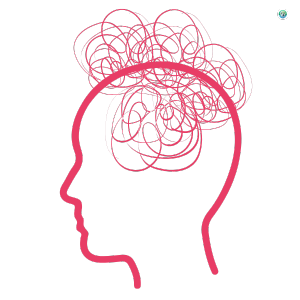
Dr Sathiya Ganesan’s
Feel. Understand. Grow – DBT for Emotional Strength in Every Child.
Emotionally Balanced, Strength-Based Therapy to Help Young Minds Regulate, Relate, and Recover
Some children and teens experience intense emotions that feel overwhelming and hard to manage. Their reactions may seem extreme — mood swings, outbursts, impulsivity, or shutting down. These are not signs of failure; they are signs of emotional pain.
Dialectical Behaviour Therapy (DBT) is an evidence-based treatment that teaches children and adolescents how to manage big feelings, respond calmly, and build healthier relationships.
Dr. Sathiya Ganesan, Consultant Psychiatrist in Child and Adolescent Mental Health, offers DBT-informed therapy designed specifically for young people who struggle with emotional regulation, self-harm, or interpersonal conflict.
Understanding DBT
Balancing Acceptance and Change for Emotional Growth

Originally developed for individuals with chronic emotional dysregulation and self-harm behaviours, DBT has been adapted successfully for adolescents and older children. It helps them accept their feelings while learning tools to manage them more effectively.
DBT is ideal for children and teens who struggle with:
- Intense mood swings and emotional outbursts
- Self-harming behaviors or suicidal thoughts
- Impulsivity and risky behavior
- Low self-esteem or shame
- Relationship conflicts and peer rejection
- Anxiety, depression, or trauma-related symptoms
- Borderline traits or emotional sensitivity
DBT teaches young people how to ride the waves of emotion — without sinking in them.
Signs a Child May Benefit from ABA Therapy
- Frequent meltdowns or outbursts that seem hard to control
- Self-harm (cutting, hitting, risky actions) or suicidal talk
- Sudden shifts in mood or extreme emotional sensitivity
- Difficulty maintaining friendships or family relationships
- Feeling “too much” or overwhelmed by everyday stress
- Black-and-white thinking or fear of abandonment
- Difficulty calming down or using healthy coping tools
DBT is especially helpful for teens who have tried other therapies but still feel emotionally overwhelmed or misunderstood.
Core Components of DBT
DBT is a structured, skills-based therapy that teaches four main areas:
- Mindfulness
Being present in the moment, observing emotions without judgment. - Emotional Regulation
Recognizing, labeling, and managing strong emotions effectively. - Distress Tolerance
Learning to survive emotional pain without making things worse. - Interpersonal Effectiveness
Navigating relationships with confidence, boundaries, and self-respect.
Each child or teen learns how to accept their feelings while developing tools for change.
What Happens in DBT Sessions?
Dr Sathiya Ganesan’s DBT-informed approach includes:
- Individual therapy sessions focused on skill-building and problem-solving
- Structured worksheets and exercises for emotional coaching
- Crisis planning and safety monitoring (when needed)
- Guided mindfulness and relaxation training
- Family involvement to ensure support at home
- Homework tasks to practice real-life application of DBT skills
For adolescents, DBT often includes skills training groups or family-based sessions to reinforce consistent emotional habits.
How DBT Helps Young People Heal
- Reduces emotional impulsivity and self-harming urges
- Builds self-awareness, reflection, and calm thinking
- Improves communication and reduces relationship stress
- Strengthens problem-solving and decision-making
- Increases tolerance to distress without panic or shutdown
- Encourages self-worth, boundaries, and emotional insight
DBT is not just about behavior — it’s about emotional mastery and inner strength.
Integrating DBT into Comprehensive Child Psychiatry
Dr. Sathiya Ganesan uses DBT alongside:
- Psychiatry and medication (if required)
- CBT or trauma-focused therapy
- Family therapy and parenting guidance
- School coordination for emotional support
- Mindfulness and lifestyle counseling
This integrated approach ensures that DBT fits into a whole-child care model, empowering both children and families.
Family Involvement in DBT
Parents are not left out — they are essential. Dr. Ganesan provides:
- Education on DBT skills and emotional validation
- Coaching on how to respond to meltdowns with empathy and structure
- Guidance on safety planning and emotional boundaries
- Tools to model calm behavior and reduce household tension
Healing is more effective when the entire family learns to manage emotion and conflict with support and balance.
Online DBT Support and Follow-Up
Dr. Sathiya Ganesan offers online DBT-informed sessions for:
- Skill reinforcement and crisis coaching
- Parent training and family review
- Ongoing therapy continuity
- Progress tracking and emotional goal setting

Why Choose DBT With Dr. Sathiya Ganesan?
With deep experience in adolescent psychiatry and emotional regulation, Dr. Sathiya Ganesan offers DBT that is:
- Structured, trauma-informed, and youth-friendly
- Adapted to each child’s pace, strengths, and readiness
- Delivered with compassion, clarity, and clinical precision
- Focused on both emotional safety and long-term growth
Help Your Child Build Balance, Boundaries, and Emotional Strength
If your child is feeling overwhelmed by emotions or struggling to cope in healthy ways, Dialectical Behaviour Therapy can be life-changing. Contact Dr. Sathiya Ganesan today to begin a personalised DBT plan that fosters resilience, emotional wisdom, and growth.
Is DBT only for teenagers with self-harm or suicidal behaviour?
No. While DBT is highly effective for these concerns, it also benefits children and teens with anxiety, mood swings, trauma, or relationship difficulties.
What’s the difference between DBT and CBT?
CBT focuses on changing thoughts and behaviors. DBT combines this with acceptance, emotion regulation, and mindfulness, especially helpful for intense emotions.
Can DBT help children under 12?
Yes. While traditionally used for teens, DBT principles can be adapted for younger children with emotional outbursts, mood instability, or impulse control issues.
Are parents involved in DBT sessions?
Yes. Parent coaching is a vital part of DBT. Families learn to support emotional growth, manage crises, and reduce reactive patterns.
How long does DBT take?
Treatment duration varies, but many children benefit from 3–6 months of consistent therapy, with ongoing support based on progress.


